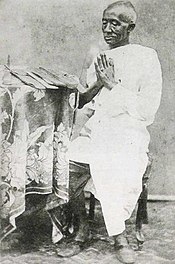B'alijaj Chan K'awiil II
| B'alijaj Chan K'awiil II | |
|---|---|
| K'uhul Ajaw | |
 BCK2 in 1889 | |
| Tenure | 08 September 1828 – 17 March 1902 |
| Coronation | 11 March 1829 |
| Predecessor | Lady Ik' Jol |
| Successor | Sak K'uk II |
| Born | 5 July 1821 Chak Yaxnah Hokan, K'alak Muul |
| Died | 17 March 1902 (aged 80) Puylum, Yajawil of Xukaja |
| Burial | |
| Ixim | Sahil Sama |
| Issue |
|
| House | Ilok'tab Dynasty |
| Father | Itzamnaaj B'alam |
| Mother | Lady Ik' Jol |
B'alijaj Chan K'awiil II (Born 5 July 1821, died 17 March 1902) was Divine Lord if the Mutul from the assassination of his mother in 1828 to his own death in 1902. His 74 years long rule, the first eighteen of which were spent under the regency of his father Itzamnaaj B'alam, is the longest recorded reign of Mutulese history. When he rose to the throne, he was also one of the youngest monarchs of the Divine Kingdom.
B'alijaj Chan K'awiil II continued the work of his parents to build up a divine right absolutist monarchy capable of federating around himself the various people of the Mutul fractured by a century of conflicts and civil war. He was capable of maintaining his father' reforms and expanding them, granting the Mutul a de-facto constitution and definitively pacifying the trader-aristocracy, itself weakened by the loss of their oversea empires and by their defeat during the Sajal War. He nonetheless acquired their loyalty through his financial supports to the country' Industrialisation, granting the old Houses new opportunities. The first act of this modernisation was the signature by B'alijaj Chan K'awiil II of a Decree forbidding the enslavement of people in the Divine Kingdom. As the children of slaves were not slaves themselves, this led to the disparition of slavery in the Mutul after a generation.
It's also under his rule that the modern cult of personality surrounding the K'uhul Ajaw would be truly established, with royal altars in every house of the Mutul as well as portraits and royal mantras in all public places and buildings. the Sajal War had stopped the processus of Secularization of the Mutulese society, but it is B'alijaj Chan K'awiil II who truly erected the White Path as the core unifying factor of the country and facilitator of his modern nation-building program.
The end of his rule his marked by the birth of Belfras and a renewal of tensions with the Latin Empire, a conflict which had been on hold for more than a century at this point. The Arms race between the two countries led directly to the Belfro-Mutulese War of 1911, although B'alijaj Chan K'awiil would not live to see this, and instead the task of leading the Mutul through the conflict would fall on his granddaughter's shoulders : Sak K'uk II.